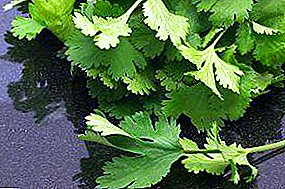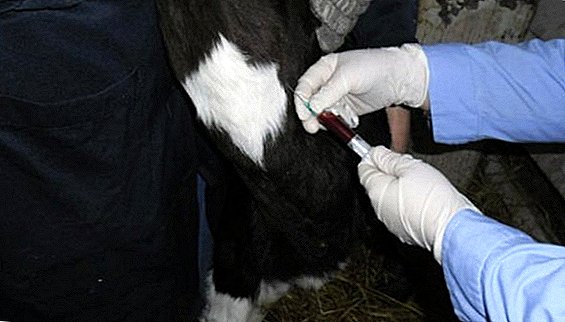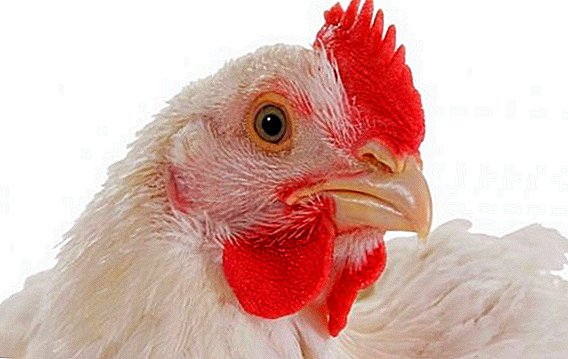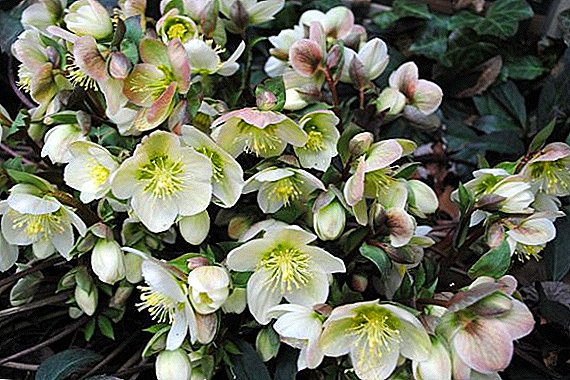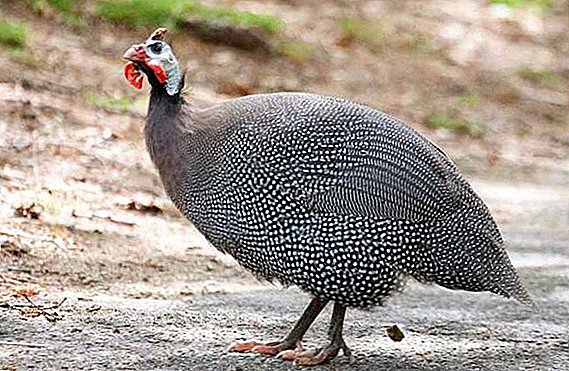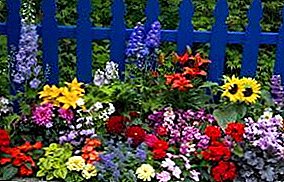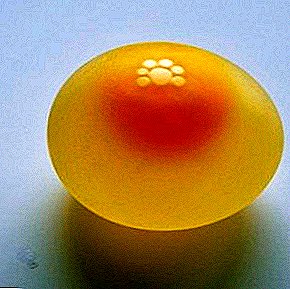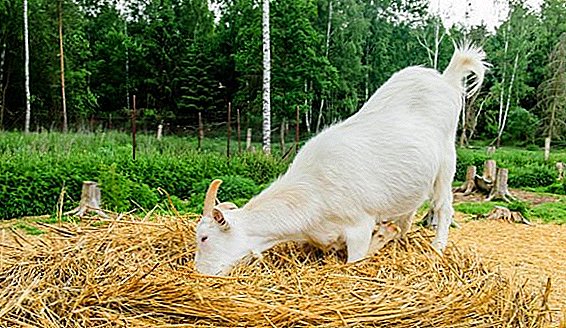 Harvesting hay for goats for the winter is a difficult and time-consuming task, the lives and health of the livestock for many months will depend on its correct and timely decision. Work with blanks should begin at the end of spring or early summer and do not put off until autumn to avoid problems and disruptions.
Harvesting hay for goats for the winter is a difficult and time-consuming task, the lives and health of the livestock for many months will depend on its correct and timely decision. Work with blanks should begin at the end of spring or early summer and do not put off until autumn to avoid problems and disruptions.
Where to get hay and how to harvest the right amount?
Buying ready-made hay from agricultural enterprises or farms is the easiest way to solve the problem of harvesting. But it’s also too much of an expense that not everyone can afford. In addition, it is impossible to assess its quality - how it is dried, whether it is not rotted, not rotted, whether there are no poisonous or inedible herbs in it. Therefore, many farmers are trying to create stocks of feed for the winter on their own, especially if the herd is small.  Most of all goats are fond of soft and fragrant hay, mown on mountain and flood meadows. In addition to natural forbs, harvested and additionally sown forage crops - alfalfa, clover, cereals and legumes. Mowing herbs begin before flowering. At this time, the content of nutrients in them is the highest, a large number of leaves and stems are not coarse. Cereals are mowed at the beginning of earing, and legumes - immediately after the opening of the buds.
Most of all goats are fond of soft and fragrant hay, mown on mountain and flood meadows. In addition to natural forbs, harvested and additionally sown forage crops - alfalfa, clover, cereals and legumes. Mowing herbs begin before flowering. At this time, the content of nutrients in them is the highest, a large number of leaves and stems are not coarse. Cereals are mowed at the beginning of earing, and legumes - immediately after the opening of the buds.
Important! It is necessary to ensure that poisonous plants or spoiling milk and giving it an unpleasant smell - wormwood, tansy, garlic, rape, celandine and others do not fall into harvested herbs.
To improve drying, no mowing should be done after precipitation or during dew. Grass ted immediately after mowing and then as the top layer dries. After reaching a hay humidity of 40-50%, it is rolled into rolls and dried to a moisture content of 20-25%, then sent to storage.  For storage, rooms with a roof or a shed - haylofts are suitable, or they are preparing storage areas on high ground, they are covered with gravel for drainage and after laying the stacks or bales are covered with a tarpaulin. If in this area there are no conditions for growing high-quality grass for hay, it is allowed to harvest straw, chaff of cereals and corn stalks for adult animals.
For storage, rooms with a roof or a shed - haylofts are suitable, or they are preparing storage areas on high ground, they are covered with gravel for drainage and after laying the stacks or bales are covered with a tarpaulin. If in this area there are no conditions for growing high-quality grass for hay, it is allowed to harvest straw, chaff of cereals and corn stalks for adult animals.
Did you know? Goats are very intelligent and sociable animals, and intellectually compete with dogs. They are amenable to training, they easily open the bolts and bolts, just like dogs, they become attached to the owner and can beg for a treat from him with a single "plaintive" look.
How much goat does hay need?
The amount of food needed for each individual is individual and depends on the age, sex, weight and health of the animal, daily need, and other factors. The feed rate can be increased as long as it has a good effect on productivity. As soon as the goat ceases to grow, and it no longer gains weight, the diet should be adjusted downward so that it does not start to fatten. 
Rate per day
The goat is usually fed 2 or 3 times at regular intervals, dividing the daily ration of feed. On average, an adult dairy individual needs 4 kg of hay per day. Breeding goats need enhanced nutrition and they expect one and a half times a day for them.
Did you know? Goat milk is the best in nature and replaces female milk and is absorbed 5 times faster than cow milk.
When calculating the amount of feed for pregnant females, it is necessary to add the weight of dried grass for kids, which are taught to coarse food a few weeks after birth. For each small goat, you need to add 0.5-1 kg of feed per day, and young stock from half a year to a year requires 1.5 kg.
For winter
Based on the daily norm multiplied by the number of days in the stall, for each animal, the amount of hay required for the winter is calculated. Just in case, add another 100-200 kg, because depending on the climatic features of the region and weather conditions, the stall period can last up to 6-7 months. In addition, with proper storage, the remaining hay can be used next year.  One winter goat needs, on average, 400-550 kg of harvested dry grass for the winter period. When buying it in bales of 20 kg, this is about 20-28 bales, respectively. Consumption of hay for the winter can be reduced to 250 kg, if you prepare in addition to him dry branches of 200 kg per head and dry leaves of 150-200 kg.
One winter goat needs, on average, 400-550 kg of harvested dry grass for the winter period. When buying it in bales of 20 kg, this is about 20-28 bales, respectively. Consumption of hay for the winter can be reduced to 250 kg, if you prepare in addition to him dry branches of 200 kg per head and dry leaves of 150-200 kg.
Important! Despite the unpretentiousness and endurance of goats, they should not be given spoiled and moldy foods, greened potatoes, and watered with polluted water.
Other suitable feeds
In order to diversify the nutrition of the goat and not to contain it only on one type of food, you need to add other feed to the full growth and development of the animal and get high yields. 
For the winter period, the share of hay in the diet should be at least 30%, the remaining amount can be filled with various types of complementary foods:
- Vegetables, fruits and food waste in the form of chopped or chopped on a large grater. They are useful as a source of vitamins, and feed them with pleasure. Boiled potatoes, fodder beets, carrots, pumpkins, apples, all sorts of berries, watermelon rinds and so on are suitable. An adult individual can eat these supplements of 2-3 kg per day, and kids - up to a kilogram.
- Bran rich in protein and trace elements, they are mixed in swill. Grain of oats or barley is given in a mixture with vegetable peels and other kitchen waste in the amount of 10% of the diet for adult animals and young animals after 6 months.
- Juicy silage also a valuable hay food supplement that goats eat willingly.
- Branches of hardwood trees, harvested and dried in summer, and coniferous trees in winter, are also readily eaten. To find out from which trees winter stocks are cut, goats are given a chance to try several different species. Usually, all goats, without exception, love the branches of willow and fruit trees, but you can also offer birch, linden, poplar, aspen. Cut them about half a meter long and as thick as a finger, tied into bunches and dried in a hanging form.
- Additionally, you can dry out some leaves of trees, which are then stored in bags. Another favorite treat, especially for kids, is dried nettle.
In addition to feed, goats should receive the necessary amount of liquid for drinking, and have year-round access to a bar of salt, preferably iodized, which they can lick if necessary.
Learn more about how to feed a goat.
Tips experienced herders
Based on the personal experience of keeping goats, farmers and herders share their recommendations for winter feeding the animal, which help even beginners to successfully cope with this task:
- it is desirable to make feeders out of the net so that the hay does not fall out and do not tread, and the animals can pull it out little by little;
- the best variant of the feeding device is suspended so that a goat or young animals cannot climb into it;
- all new feeds are added to the usual food, first in a small amount, gradually increasing the amount;
- the grain is easier to digest in crushed form, and the whole is better to steam;
- feeding is continued for no more than an hour or two, otherwise the goats will start to scatter and tread down the food;
- in the winter, in the first two feeds it is better to give roughage, and in the evening fruits, hay and grain or silage;
- in clear weather, animals need to be let out for walks, fresh air improves health and improves appetite.
 Goats adapt well to different conditions, have excellent health and eat the most varied food. With a minimum of effort, you can get an additional source of food and income for the family.
Goats adapt well to different conditions, have excellent health and eat the most varied food. With a minimum of effort, you can get an additional source of food and income for the family.

